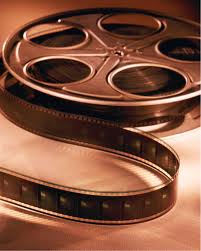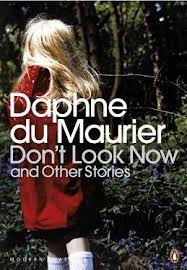
Before I list my ten best films of 2013, I am once again compelled to mention those that narrowly missed out. It is with great regret, therefore, that I name Saving Mr Banks, The Conjuring, Frozen, Byzantium, Prisoners, Rush, Mud, A Hijacking and I Wish as films that almost but didn’t quite make the shortlist.
Also a quick note for non-UK residents: to qualify for this list the film must have been released in the UK in 2013 – hence some of the major Oscar contenders (such as 12 Years a Slave) are not in the running.
One final point: I have yet to see Robert Redford’s supposedly superb All is Lost (released on Boxing Day), so I may later amend this list. However for now, in order of merit, my ten best films of 2013 are as follows:
10. Nebraska – Alexander Payne’s slow but warmhearted father/son road movie contains much of his usual offbeat, darkly comic, melancholy schtick. It also throws up interesting subject matter including economic downturn in the Midwest, small town racism, aging veterans and more. Beautiful monochrome vistas too.
Best Bit: The hilariously inappropriate comments in the graveyard.
9. Zero Dark Thirty – Whatever the controversies surrounding this depiction of the hunt for Osama Bin Laden, Katherine Bigelow’s film is absolutely first-rate. Jessica Chastain is brilliant as usual in the lead role – a woman whose entire existence is defined by her obsession with tracking down Bin Laden.
Best Bit: The riveting climactic raid, shorn of all machismo with professionals merely carrying out their job.
8. The Place Beyond the Pines – Ryan Gosling, Bradley Cooper and Dane DeHaan excel in this modern Greek tragedy exploring – in epic fashion – difficult relationships between fathers and sons. Some argued the film was flawed by the plot being too neat, but that didn’t bother me one bit. In fact, I found it a properly upsetting experience (that’s a compliment, by the way).
Best Bit: (SPOILER WARNING) The shot of the motorbike zooming away at the end is quite possibly the most heartbreaking image I have seen all year.
7. The Great Gatsby – Unfairly trounced by critics, this was a remarkable interpretation of Fitzgerald’s classic novel. Baz Luhrmann’s unique visual style, bold musical choices and a terrific performance by Leonardo DiCaprio are only three reasons this is far from the turkey so many claimed it to be. Its themes are both timely (capitalist excess, moral decadence) and timeless (romantic obsession).
Best Bit: The hotel room showdown between Gatsby and Daisy’s boorish husband Tom.
6. Wreck-It Ralph – This animated Disney gem based in a computer game world was an unexpected blast of pure joy from beginning to end. In the run-up to this film’s release I had subjected myself to the likes of Amour and Zero Dark Thirty, and had almost forgotten what it was like to feel better coming out of a cinema than when you went in.
Best Bit: The ridiculous – and absolutely hilarious – romantic subplot between Fix-It Felix Jr and the tough-as-nails soldier from the space bug game.
5. Philomena – This hugely powerful true story of a journalist helping an Irish woman track down her lost son decades after he was taken from her by the Catholic church (via the notorious Magdalene laundries) has an undercurrent of seething rage lurking beneath its entertaining, odd-couple dynamic. Great performances from Judi Dench and Steve Coogan.
Best Bit: The final confrontation when the journey comes full circle. Those who have seen the film will know what I mean.
4. Captain Phillips – Another true story, this time that of the eponymous Captain Phillips (Tom Hanks), whose harrowing tussle with Somali pirates is recreated to utterly riveting effect in this nail-chewing and uber-realistic thriller from Paul Greengrass. Incidentally Danish film A Hijacking offered a very different but no less gripping look at the Somali piracy issue, and was another strong candidate for this list.
Best Bit: (MAJOR SPOILER WARNING) The final scene where Phillips is treated for shock; simultaneously a bravura piece of acting and a stunning depiction of the appalling consequences of undergoing such violent trauma. In effect it completely debunks years of Hollywood action movie histrionics.
3. Blue Jasmine – Woody Allen’s remarkable drama features a career-best performance from Cate Blanchett as Jasmine; a socialite trying to rebuild her life following her husband’s prosecution for financial fraud. Selfish, snobby, self-deluded and condescending, Jasmine ought to be insufferable yet Blanchett makes her live and breathe so brilliantly that one ends up feeling sorry for her. Great supporting cast too (including the always wonderful Alec Baldwin).
Best Bit: When we discover who really tipped off police about Jasmine’s husband, and why…
2. Gravity – A fantastic rebuttal to those who claim cinema is a spent force and that the most interesting drama is on TV these days. Technically this is a cinematic triumph to stand alongside 2001: A Space Odyssey, though Gravity is not actually science fiction. In essence the plot is little more than a survival B-movie is space, but it is done so well with great performances from Sandra Bullock and George Clooney. It absolutely must be seen on a big screen, ideally in 3D.
Best Bit: Where Bullock experiences what is either a message from God in Clooney form, or a hallucination brought on by lack of oxygen. Either way, the metaphysical aspect of this story is every bit as powerful as the stomach flipping disaster sequences.
1. The Hobbit: The Desolation of Smaug – The lure of Middle-Earth once again proves too much for me. Objectively speaking Gravity probably deserves the accolade as best film of 2013 more, but personally I can’t get enough of hobbits, dwarves, elves and orcs. And since this is my list, this second instalment of Peter Jackson’s trilogy adapting Tolkien’s novel is at the top almost by default. That said, don’t take my decision with too much salt as this is still a top-flight, five star blockbuster thrill ride that will leave you gagging for next year’s concluding film.
Best Bit: Bilbo’s conversations with Smaug – every bit as memorable in the film as they are in the book. Or maybe the bit with the barrels…
It only remains for me to wish you all a Merry Christmas.
Simon Dillon, December 2013.








